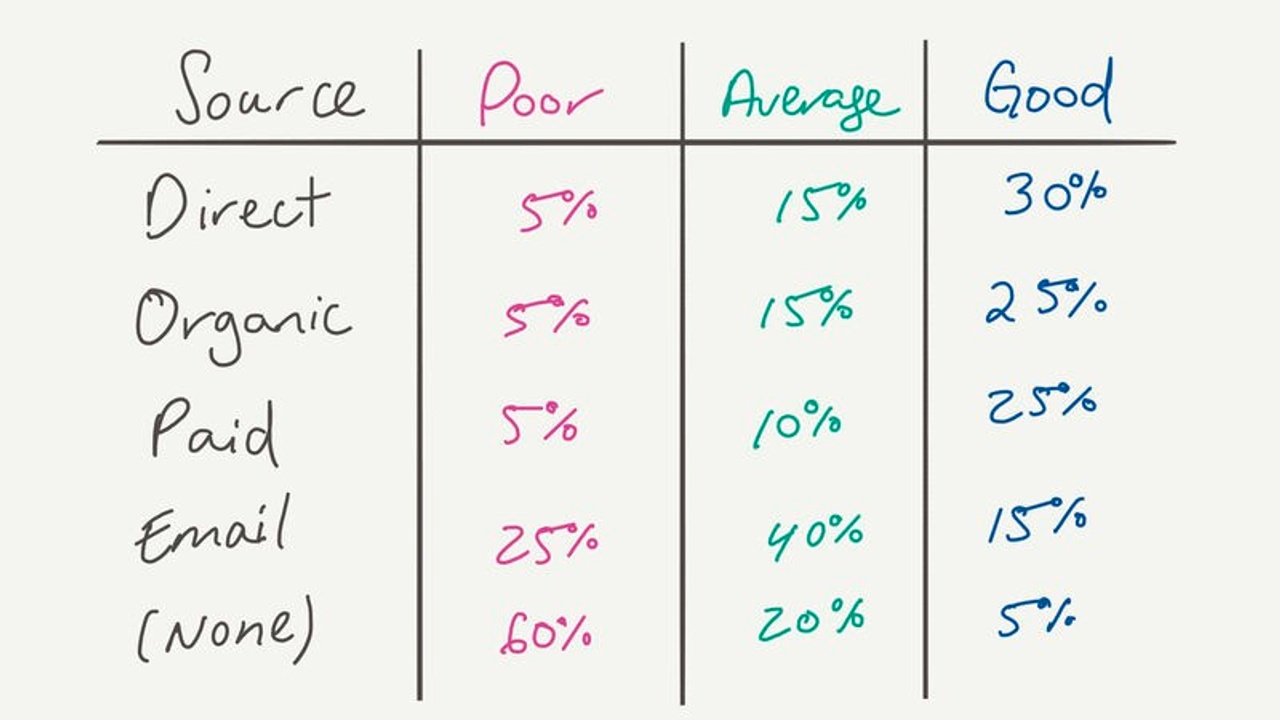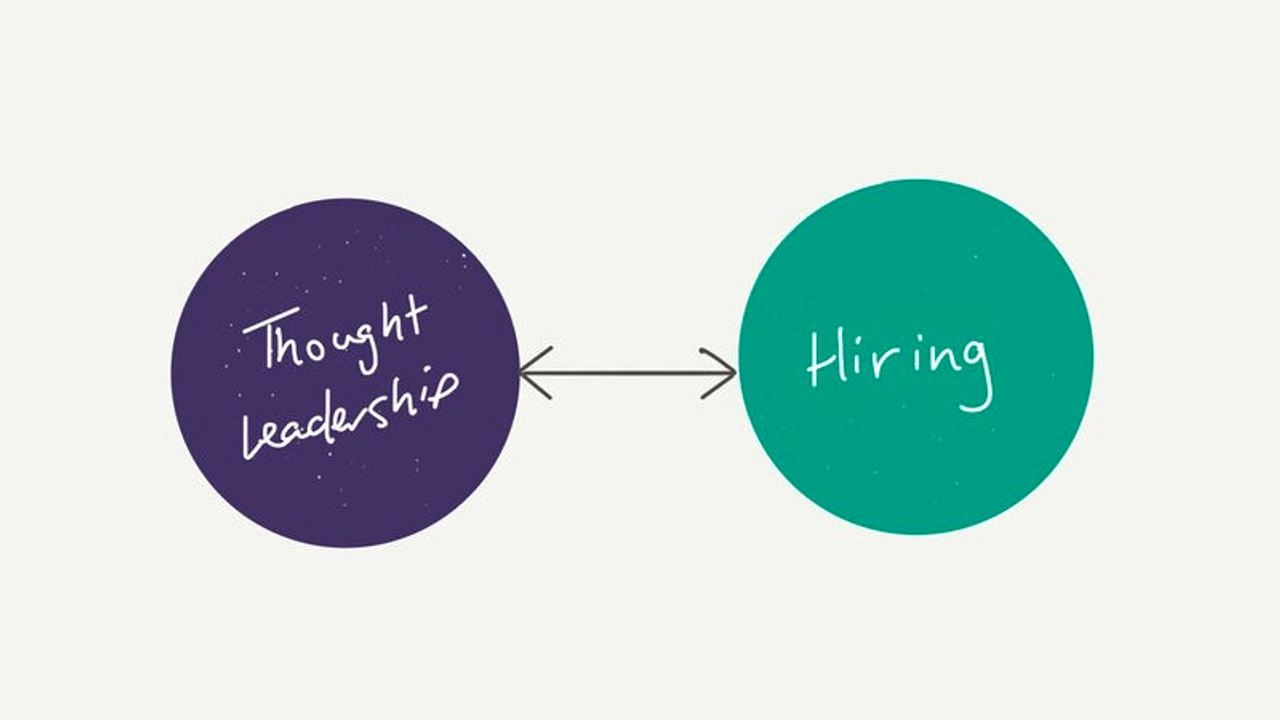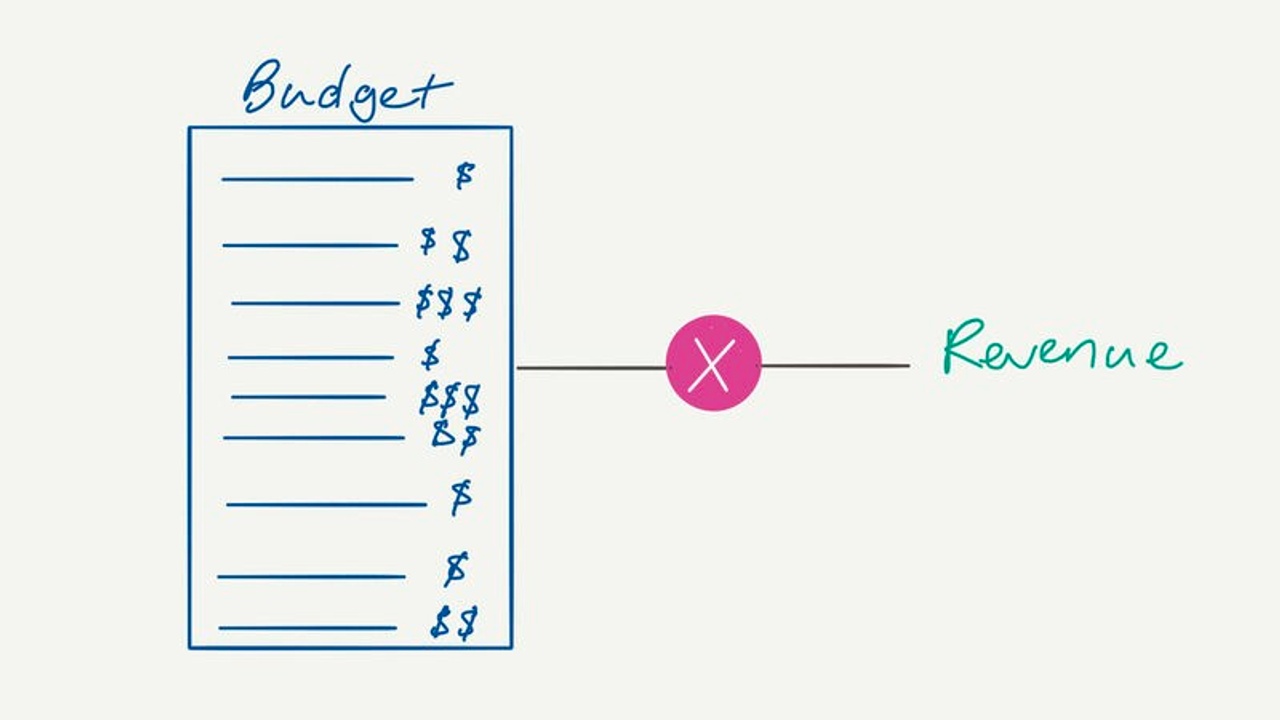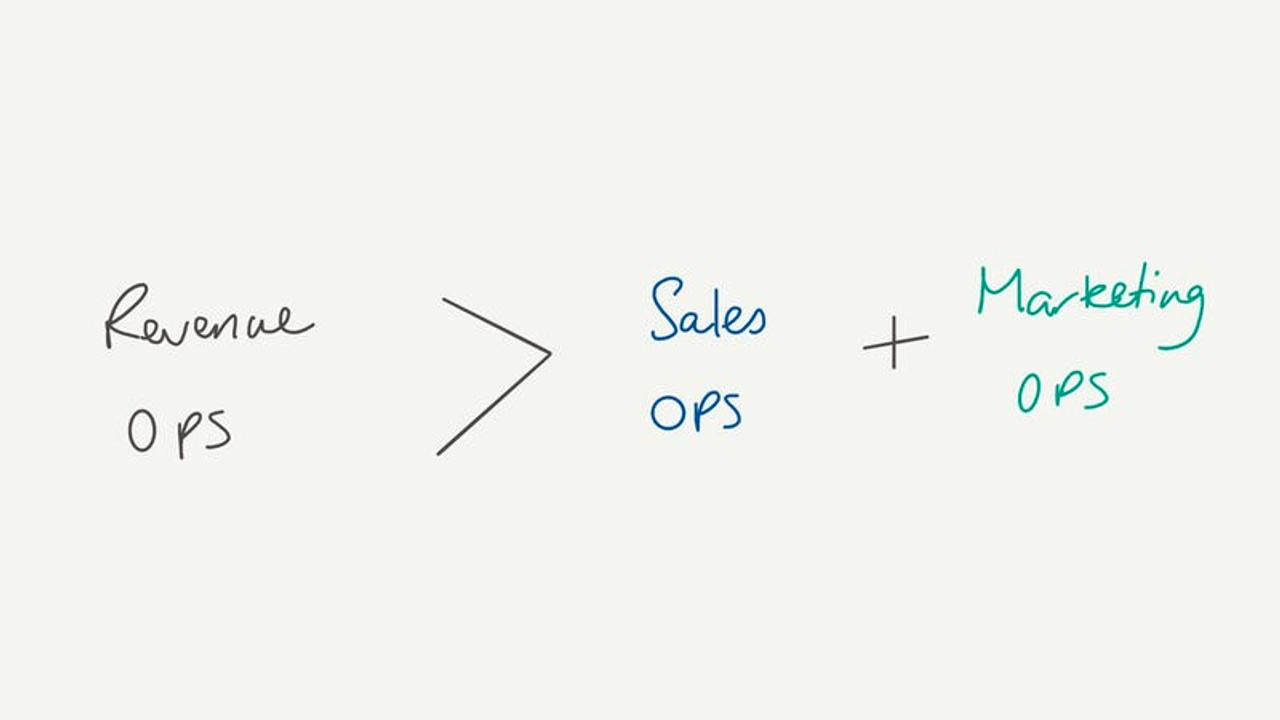What Your Pipeline Sources Reveal

Pipeline source breakdowns reveal a lot about a company's marketing maturity.
Companies at earlier stages of maturity:
-Have an abnormal proportion of pipeline sourced to the (None) category
-Do not get enough pipeline coming in via Direct / Organic sources (revealing that not enough people know about the brand)
Companies with some maturity:
-Have better distribution across sources
-Still not enough contribution from Direct / Organic / Paid
-Contribution from Email is often too high as most marketing efforts are focused on emailing existing customers / traditional activities
Companies in a good place:
-Have significantly higher pipeline being generated from Direct / Organic / Paid sources
-Have far better data tracking in place to avoid large numbers in the (None) category
Marketing Maturity Stages

Unsurprisingly, Marketing's contribution to revenue is pipeline is directly correlated with the level of investment a company is willing to make into it.
Most B2B companies:
- Are Sales-Led -- where Sales is the main revenue driver and Marketing plays a supporting role.
or
- Have Nascent Marketing -- where Marketing is barely off the ground, there are 2-3 team members, and marketing investment is less than $500K per year.
or
- Have Some Marketing -- where Marketing's contribution to pipeline ranges somewhere between the 10-20% mark, with 4-5 team members and still limited spend.
When you look up and around at the market leaders in every category, market, vertical or segment, however, you notice that most market leaders have a significantly higher contribution from marketing efforts (closer to the 30-70% range).
And shocker...they also have larger Marketing budgets with larger teams.
You can't have one without the other.
Are You Following the Right Order of Content?

Too many companies get caught in producing content in the wrong order.
For example, what good is SEO content if you don’t have your core messaging and product marketing pillars figured out?
The right order of doing things:
- Sort out your Product Marketing (core messaging, value prop)
- Enable and empower the Sales team with the right materials and assets
- Run customer marketing campaigns to capture expansion opportunities from the existing base
- Set up nurture campaigns to help prospects make their way through their buyer journey
- Build thought leadership content with a unique perspective and story to differentiate yourself in the marketplace
- Create content to rank for organic search
Obsessing about number 6 when numbers 1-5 have not been figured out is a recipe for disaster.
The Marketing Pyramid for Scaling Revenue

Revenue growth is the ultimate objective for Marketing. But in order to make that possible, there are several elements that need to come together:
- Foundational
-Understand your market, customers and competitors
-Build the right story, positioning and message
-Analyze historical context and performance of the business
- Infrastructure
-Create the right data ops model for marketing and sales
-Have the right tech stack in place
-Build a website that converts
-Have a Sales process leads successfully convert through
- Planning
-Build the right Marketing strategy and mix of channels
-Hire and onboard a competent team capable of executing
-Secure the right amount of Marketing budget
- Programs
-Create compelling content that resonates with your audience
-Launch demand gen programs to scale outreach
The ultimate goal of all this is to drive revenue growth.
Given how many components are involved, you need leaders who have the patience to build a...
Product Roadmap vs. Thought Leadership

Your thought leadership content and your positioning / messaging should be directly connected to your product roadmap.
What good is it to talk about the leading edge if your product can't deliver on that promise?
This is where Marketing and Product working together can create a significant amount of value for the business.
It is also often work that Marketers don't spend as much time on because near-term pipeline generation is always a priority.
But the more time that's spent in aligning Product / Delivery and what the customer receives with what is promised / communicated on front-end, the stronger a company's ability to scale.
Is Your Expensive SKO Worth It?

Sales-led companies are notorious for spending hundreds of thousands of dollars on expensive Sales Kickoffs to start the year.
While SKOs certainly serve a purpose to educate and enable sales reps so they can sell more / better, the messaging inside these events often resorts to old school sales platitudes like:
-"Pound the pavement"
-"You can crush your targets"
-"Keep dialing for dollars"
Meanwhile, the company's Go-To-Market is weak. The overall company narrative and story don't resonate with customers and prospects. There isn't enough content produced to educate prospects along their journey. There aren't enough demand generation programs in place to produce inbound MQLs.
This is how sales reps are set up to fail. They eventually miss quota. Board meetings get uncomfortable. VPs of Sales are replaced.
And then the cycle repeats all over again.
Instead, the odds of success increase significantly if the company actually invested into a Go-To-Market to build momentum to generate pipeline.
Sale...
Product Roadmap vs Thought Leadership

Your thought leadership content and your positioning / messaging should be directly connected to your product roadmap.
What good is it to talk about the leading edge if your product can't deliver on that promise?
This is where Marketing and Product working together can create a significant amount of value for the business.
It is also often work that Marketers don't spend as much time on because near-term pipeline generation is always a priority.
But the more time that's spent in aligning Product / Delivery and what the customer receives with what is promised / communicated on front-end, the stronger a company's ability to scale.
The Impact of Thought Leadership on Hiring

One of the most understated benefits of thought leadership content is its impact on hiring.
Yes, thought leadership content with a unique perspective can evangelize a new category and ramp up pipeline / sales.
But a secondary (and almost, more important) benefit is that it helps grow the employer brand beyond just winning another "best place to work" or "fastest growing company" award.
The right kind of content signals to potential candidates what kind of world you are trying to build. The more candidates that vision and perspective aligns with, the bigger the hiring pipeline that can be built to help a company scale.
Your educational / thought leadership / category evangelism content not only helps your market and customers transform their lives, it also helps bring people into the mission and team to help the market even more.
In a market where everyone is raising millions of dollars, more companies are hiring than ever before and compensation for roles has climbed 20-50%, thought leaders...
The Budget to Revenue Disconnect You Should Be Aware of

At some point, budgets agreed upon with finance teams must show ROI in the form of revenue.
While playing the patient game with marketing and understanding that not everything can be measured is important, so are results.
If Finance doesn’t ask you why revenue hasn’t gone up, then finance isn’t doing its job. If the CEO doesn’t put Marketing, Sales and Finance in the same room and ask the question, then the CEO isn’t doing his/her job.
While the right channels not getting attribution because of how customers behave is very true, hiding behind brand / comms work is equivalent to hiding behind attribution metrics.
Your overall revenue metrics should trend upwards as you:
-Invest more in content
-Spend more on paid channels
-Add more headcount
-Bring in more marketing tools
-Hire more agencies
This means Marketing Sourced Pipeline goes up, Sales Cycles decrease, Marketing Sourced Revenue goes up.
If they’re not improving over a long period of time, maybe your brand / content / demand gen work isn’t ...
The Overarching Revenue Ops Plan Your Company Needs

Separating out Sales Ops and Marketing Ops makes little sense when you realize that Sales and Marketing are both accountable for revenue.
Every company needs an overarching Revenue Ops plan in terms of:
-Architecture
-Systems and technology stack
-Process
-Data governance
-Definitions and routing
-Feedback loops
Both Sales and Marketing should speak the same language when it comes to all of these. When it comes time to make budgeting decisions, both should be referencing the same data models and outputs.
Thinking about ops and data together is one of the key ways to align sales and marketing.



